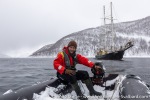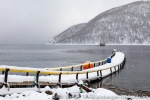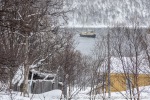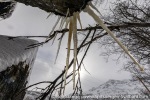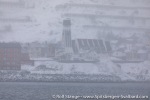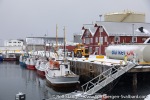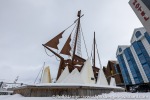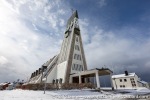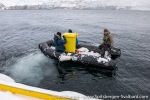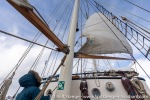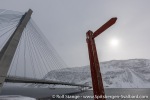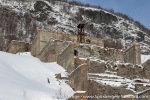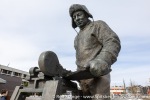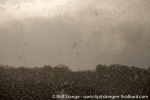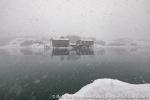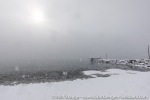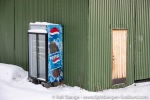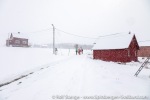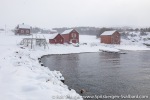-
current
recommendations- Liefdefjord
New page dedicated to one of Spitsbergen's most beautiful fjords. Background information and many photos.
- New Spitsbergen guidebook
The new edition of my Spitsbergen guidebook is out and available now!
- Liefdefjord
New page dedicated to one of Spitsbergen's most beautiful fjords. Background information and many photos.
Page Structure
-
Spitsbergen-News
- Select Month
- April 2025
- March 2025
- February 2025
- January 2025
- December 2024
- November 2024
- October 2024
- September 2024
- August 2024
- July 2024
- June 2024
- May 2024
- April 2024
- March 2024
- February 2024
- January 2024
- December 2023
- November 2023
- October 2023
- September 2023
- August 2023
- July 2023
- June 2023
- May 2023
- April 2023
- March 2023
- February 2023
- January 2023
- December 2022
- November 2022
- October 2022
- September 2022
- August 2022
- July 2022
- June 2022
- May 2022
- April 2022
- March 2022
- February 2022
- January 2022
- December 2021
- November 2021
- October 2021
- September 2021
- August 2021
- July 2021
- June 2021
- May 2021
- April 2021
- March 2021
- February 2021
- January 2021
- December 2020
- November 2020
- October 2020
- September 2020
- August 2020
- July 2020
- June 2020
- May 2020
- April 2020
- March 2020
- February 2020
- January 2020
- December 2019
- November 2019
- October 2019
- September 2019
- August 2019
- July 2019
- June 2019
- May 2019
- April 2019
- March 2019
- February 2019
- January 2019
- December 2018
- November 2018
- October 2018
- September 2018
- August 2018
- July 2018
- June 2018
- May 2018
- April 2018
- March 2018
- February 2018
- January 2018
- December 2017
- November 2017
- October 2017
- September 2017
- August 2017
- July 2017
- June 2017
- May 2017
- April 2017
- March 2017
- February 2017
- January 2017
- December 2016
- November 2016
- October 2016
- September 2016
- August 2016
- July 2016
- June 2016
- May 2016
- April 2016
- March 2016
- February 2016
- January 2016
- December 2015
- November 2015
- October 2015
- September 2015
- August 2015
- July 2015
- June 2015
- May 2015
- April 2015
- March 2015
- February 2015
- January 2015
- December 2014
- November 2014
- October 2014
- September 2014
- August 2014
- July 2014
- June 2014
- May 2014
- April 2014
- March 2014
- February 2014
- January 2014
- December 2013
- November 2013
- October 2013
- September 2013
- August 2013
- July 2013
- June 2013
- May 2013
- April 2013
- March 2013
- February 2013
- January 2013
- December 2012
- November 2012
- October 2012
- September 2012
- August 2012
- July 2012
- June 2012
- May 2012
- April 2012
- March 2012
- February 2012
- January 2012
- December 2011
- November 2011
- October 2011
- September 2011
- August 2011
- May 2011
- April 2011
- March 2011
- February 2011
- January 2011
- December 2010
- November 2010
- September 2010
- August 2010
- July 2010
- June 2010
- May 2010
- April 2010
- March 2010
- February 2010
- November 2009
- October 2009
- August 2009
- July 2009
- June 2009
- May 2009
- April 2009
- March 2009
- February 2009
- January 2009
- December 2008
- November 2008
- October 2008
- August 2008
- July 2008
- June 2008
- May 2008
- April 2008
- March 2008
- February 2008
- April 2000
- Select Month
-
weather information

| Guidebook: Spitsbergen-Svalbard |
Home → April, 2022
Monthly Archives: April 2022 − News & Stories
Lille Kvalfjord & Hammerfest
Fri
29 Apr
2022
The weather does all sorts of things here these days, but not necessarily what we want it to do. Crossing the Barents Sea is currently not an option, but we are happy here on the Norwegian mainland coast. After some weather-related changes of plans we ended up in Lille Kvalfjord on Stjernøya. Never heard? Neither have we 🙂

Lille Kvalfjord on Stjernøya in Altafjord.
It is really a lost place, with a tiny settlement, but it seems completely deserted. Completely surrounded by steep mountains, the only access appears from the sea. But it is an beautiful place in its own way. Some old huts and houses spread along the shore and in the forest of low birch trees. Huge rocks and steep mountains. And very deep, soft snow. A very lonesome, very quiet place!
Stjernøya has always been an important place for the Sami people, who call it Stierdná. They still keep reindeer here during the summer months.
Photo gallery Lille Kvalfjord
- gallery anchor link: #gallery_2210
Click on thumbnail to open an enlarged version of the specific photo.
Then we set course for Hammerfest.
Hammerfest
Hammerfest – cool! None of us would have expected that a week ago. I have never been here before. And now we are suddenly here! Nice!

The “old” centre of Hammerfest in weather that fits the latitude.
Hammerfest is one of those cities that claim to be the northernmost one in the world. This may have been the case at some stage and of course it will depend on your definition of a city. With a good 11,000 inhabitants, it is certainly a good bit larger than Longyearbyen, no doubt.
So we spent Friday here, again with some pretty impressive weather changes.

The monument of the Struve meridian in Hammerfest.
And there are quite a few things to see and to do. There is the town itself, of course, with its streets and shops, pubs and cafés and churches. There is the monument of the Struve meridian, which was quite an impressive bit of scientific work of the early 19th century, covering a geodetic arc from the Black Sea to – exactly – Hammerfest. There is the world famous polar bear club (no, I did not join) and the museum about the regional history, mainly focussing on the awful years of the second world war which brought complete destruction to the whole area. This is why Hammerfest does not have any older buildings.
It is easy to spend a day here.
Now we expect to leave for Bear Island and Spitsbergen tomorrow (Saturday).
Photo gallery Hammerfest
- gallery anchor link: #gallery_2213
Click on thumbnail to open an enlarged version of the specific photo.
Kåfjord
Thu
28 Apr
2022
An afternoon under sail brought us yesterday to Kåfjord, at the head of Altafjord. There was a copper mine here a long time ago, you can still see the remains in this beautiful winter and mountain scenery. We got a good bit of snow yesterday evening!
The weather is indeed doing funny things these days. It will have to change a bit before we can venture out in the Barents Sea and set course for Bear Island.

Kåfjorden.
But we good some fair winds later so we could put the sails up again, sailing northwards in Altafjord. We had the idea to visit Oksfjord, but dropped that again quickly after a taste of the strong headwind in Stjernsund.

Meander under sail in Altafjord.
Foto gallery Kåfjord
- gallery anchor link: #gallery_2207
Click on thumbnail to open an enlarged version of the specific photo.
The arctic travel blog continued: with SV Meander in Altafjorden
Tue
26 Apr
2022
Full speed ahead 🙂 with SV Meander in Alta in north Norway, between Tromsø and Nordkapp. Meander isn’t a new ship – she was originally built in 1946 and has been rebuilt several times since – but she is new up here for us, so I am more than just a little bit excited, and so is the group of 11 arctic travellers and the crew: captain/owner Mario, mate (and also captain) Heine, deckhand Bastian and chef Eek.
We went on board in Alta. A town that was completely destroyed in the second world war, so all the architecture is quite modern.

Starting in Alta. Here is the northern light cathedral in the city centre.
We left the pier on Monday late afternoon and sailed out into the fjord. Our main destinations are Bear Island (Bjørnøya) and Spitsbergen, but we will first spend some days in regional coastal waters. A very clear and easy decision, considering the weather forecast.

SV Meander in Alta.
So our first place is Årøy, a little island in Altafjord. A silent place today with only 18 inhabitants, but Årøy has a history of many hundred years. And it is a scenically beautiul place. And it has some very quick weather changes!

SV Meander anchored off Årøy in Altafjord.
Yes, the weather changes were really amazing. We spent the morning hiking over the island and we went from silent snow fall to blizzard to bright sunshine and back again! Have a look at the photos for some impressions:
Photo gallery Alta – Årøy
- gallery anchor link: #gallery_2204
Click on thumbnail to open an enlarged version of the specific photo.
Fatal snow mobile accident on Longyearbreen
On Sunday (10 April) afternoon, an accident happened on Longyearbreen, a glacier a few kilometres south of Longyearbyen, during a snow mobile tour. One person was severely injured and later officially confirmed dead.
Official information that is publically available so far is limited to the fact that the casualty was a woman who was not a local resident. The accident happened during a private snow mobile tour. So far, there is no information available regarding the accident cause.
Longyearbreen is a common snow mobile route, and traffic there is frequent during the season.

Lower Longyearbreen. This is the area where the fatal snow mobile accident happened yesterday afternoon (photo taken in late March 2022).
P.S. in an earlier version of this article it was written that the casualty was travelling with a guided group. This was not correct. She was travelling with a group with both local and non-local members.
Completion: On Monday, the name of the casualty was released by the authorities after consultation with her family. It was a Norwegian woman from Trondheim.
Sanctions will hit Barentsburg
The international sanctions introduced by many countries as a reaction to the Russian war of aggression and extermination against the Ukraine will also hit the Russian north including Barentsburg.
Murmansk is Russia’s most important harbour for coal export. According to Barents Observer, years of significant growth resulted in export of more than 16 million tons in 2019. Most of the coal was exported to the EU – mainly Germany – the UK and Israel. The growth led to plans for a new coal harbour in Lavna on the Kola peninsula. The current development involves major questionmarks for this project.
Compared to the Murmansk exports, coal production in and shipping from Barentsburg is small, and irrelevant to the world market. A bit more than 100,000 tons are produced annually in Barentsburg, of which something near 30,000 tons are used in the local coal power plant and the rest is for export. These exports are globally insignificant, but nevertheless important for Barentsburg in terms of economy and jobs. Of near 400 inhabitants, around 150 are working in the coal mine, including many Ukrainians.

Coal storage and industry related to coal mining in Barentsburg: international sanctions will hit here as well.
Coal from Barentsburg was mainly sold to the UK in recent years, but it appears very unlikely that the United Kingdom will continue this trade. This would severely damage a major part of Barentsburg’s economical foundation. Tourism has been developed in Barentsburg in recent years, but this industrial sector has largely collapsed during the last two years because of the pandemic and now because of the war and associated sanctions, leaving coal mining as the only industry in Barentsburg.
Irritating interview of the Russian consul in Barentsburg
Last week – before the pictures of the cruelties in Butcha went around the world – the Russian consul in Barentsburg irritated the public with an interview with Norwegian media (nettavisen.no) saying the images of the extensive destructions in Mariupol were in some cases staged and in other cases fake. He called western media “fake news”, especially referring to Norwegian media, while pretending that Russian information is true. The article by nettavisen is Norwegian, but near the end it includes a video of the interview with the consul in English.
The inhabitants of Barentsburg seem to avoid political discussions both amongst each other and with media, as NRK found out during a visit to the settlement.
Charity: a heart for the Ukraine – handmade in Longyearbyen
As a charity, you can buy a pin in the shape a heart in the colours of the Ukraine in the spitsbergen-svalbard.com webshop. The pins are handmade in Longyearbyen and the entire returns are charity for victims of the Russian war against the Ukraine. Click here for more information.
Customs controls in Spitsbergen – because of Russian war against the Ukraine
So far, there have not been any customs controls in Spitsbergen. There was just no need: due to the regulations of the Spitsbergen Treaty, taxes are reduced. There is no value-added tax and no import taxes. Hence, there were no customs controls.
This is about to change.

Longyearbyen airport: no customs control, just a polar bear.
This will change soon (no, the polar bear is not about to disappear).
The background is the Russian war of aggression against the Ukraine and the international sanctions introduced in that context. Norway wants to make sure that Russia does not use Spitsbergen as a logistical loophole to import goods that are sanctioned. This could be possible because there is no control of goods coming to Spitsbergen and there is ship traffic between the Russian settlement Barentsburg and Russia.
This is about to change. The Norwegian government instructed the tax authorities to establish a local presence and maintain controls as necessary, according to NRK. Customs controls are announced to be in place already in early May.
It is also announced that this measure is not planned to be permanent, but will be maintained as long as there is a need.
Polar bear warning system to be released
Norwegian authorities have announced a polar bear warning system in cooperation with the Norwegian Polar Institute and Elon Musk’s satellite-based communication system Starlink.
As a first step, the whole population of Spitsbergen’s polar bears will received microchips provided by Bill Gates. These chips include a micro-sender that sends signals that will be picked up by the Starlink satellites and forwarded to through ground stations to the Norwegian Polar Institute in real time. As a result, the position of each and every single polar bear in Spitsbergen will be known at any time.

Female polar bear with tracker. The new generation of senders will be much smaller, which is also expected to significantly improve the well-being of the animals.
The public, however, will not have access to the data set as such, but users can download an app that works in a similar way as the corona-warn-apps, informing the user when a polar bear is in the vicinity. Fee-paying users of the pro version can even use a function to let the microchips installed in the ears of the bear blink brightly, to make it easier to see the approaching bear in the field – a feature especially useful during the polar night. All versions of the app will produce a loud warning signal when a polar bear approaches within 5 metres.
In the future it is planned to develop the system further so that the behaviour of polar bears can be controlled through the app, for example to make aggressive polar bears turn around and walk away peacefully.
The first version of the app is currently under development. The release of the final version is scheduled for April 01, 2222. It will then not be available here in the Spitsbergen-Svalbard.com webshop.
News-Listing live generated at 2025/April/04 at 04:06:53 Uhr (GMT+1)
